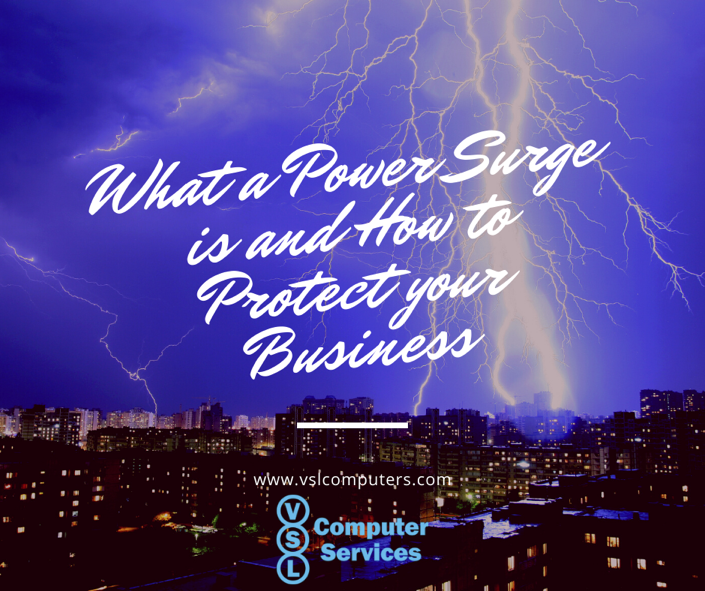What a Power Surge is and How to Protect your Business

Have you ever enjoyed an evening thunderstorm, then tried to turn a device on the next morning and it wouldn’t turn on? Maybe you had a power outage while your tablet was plugged in. When power comes back on, you unplug your tablet and try to turn it on but it has been “bricked,” essentially better as a paperweight because it no longer works.
Does any of this sound familiar to you? You may associate surges with lightning, however, “about 60-80% of power surges happen from internal sources within your home or office (Mister Sparky).”
Just about every household experiences a power surge at one point or another. What are the risks? How do you detect and prevent a power surge? We’re going to cover power surges in this article.
What is a power surge?
Let’s start with what a power surge is. NEMA defines a surge as: “In general a surge is a transient wave of current, voltage or power in an electric circuit. In power systems in particular – and this is likely the most common context that we relate surges to – a surge, or transient, is a subcycle overvoltage with a duration of less than a half-cycle of the normal voltage waveform. A surge can be either positive or negative polarity, can be additive or subtractive from the normal voltage waveform, and is often oscillatory and decaying over time. (NEMA)”
Why a power surge may be harmful
The issue with power surges is that electrical equipment is designed with a nominal voltage in mind. Electrical equipment, our TVs, gaming systems, and more, are built to handle slight variations in power. When we do not protect our equipment from surges, a power surge may kill the device, or deteriorate the electronics within the device, shortening its life.
Warning Signs
There are some warning signs internally for surges within your office. Keep an eye open for:
- Tripped circuit breakers or safety switches.
- When devices suddenly reset or lose power.
- Failing electrical devices.
When you start to notice things like the warning signs we mentioned above, it’s time to take action to protect your office from surges.
Ways you may protect your office
Did you know that there are three types of surge protectors available to you? The three different types of surge protectors a designed to protect against different surge threats. Power surges present in multiple ways from the point of origin to their behavior. A best practice is to use multiple types of surge protectors. Let’s take a look at the three types of surge protectors.
Type 1 surge protectors
Type 1 surge protectors are the largest and most durable of the different types of surge protectors and are the intermediary between your business and the power grid. These surge protectors help to filter the power coming into your business and protect it from external power surges (such as a lightning strike).
Type 2 surge protectors
These surge protectors are effective in reducing and protecting from surges caused internally and externally, being installed alongside the service panel. These surge protectors are often referred to as “whole home surge protectors” and are more effective than type 3 surge protectors at reducing large and small power spikes.
Type 3 surge protectors
Type 3 surge protectors are the ones we’re all familiar with. These are the surge-protected power strips we plug our devices into. Type 3 surge protectors are the last line of defense and should only be used in conjunction with type 1 and 2 surge protection. There are many different brands and manufacturers of type 3 surge protectors, leading to a wide range in their capabilities. You should research prior to purchasing a type 3 surge protector to ensure it is a capable one, able to redirect and protect against power surges.
